
 Brazilian Navy (1956-2001)
Brazilian Navy (1956-2001)
Fleet Aircraft Carrier (ex-HMS Vengeance, Colossus class 1942 light fleet carrier program)
Brazil Day ! – We start the study of Brazilian cold war navy with its flagship until 2001, one of the very last of the 1942 light fleet carrier program ships still afloat. MdB Minas Gerais was indeed the ex-HMS Vengeance, a British RN Colossus class, purchased in 1956 and after long transformation in the Netherlands, transferred in 1961. She stayed in service until 2001, operating as ASW carrier, then assault ship at the end of her career (with S2 Trackers, A4 Skyhawks and several helicopter types) and replacement by the ex-Foch (Clemenceau class). #brazil #marinhadobrazil #minasgerais #colossusclass #aicraftcarrier #Mingão #coldwar #kubitschek
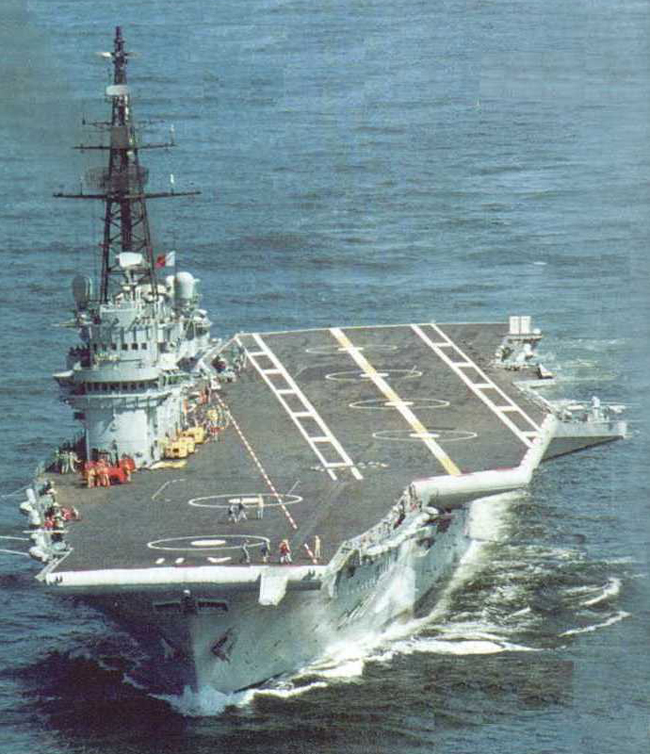
The first Brazilian Aircraft Carrier
During the run-up to 1955 presidential election, Juscelino Kubitschek de Oliveira (governor of Minas Gerais state) promised Brazilian admirals the acquisition of an aircraft carrier. The Brazilian Navy already asked for these in 1952. The United Kingdom offered soon a first oppotunity, the sell of HMS Leviathan and/or HMS Hercules, two in completion (suspended at the time). The Brazilian Government was reaching finalization of the proposal for the Leviathan, but in early In 1953 Brazil lacked the budget to acquire the ship (voted down).
In 1956, Minister of the Navy Renato de Almeida Guillobel elaborated a new naval plan including again an aircraft carrier, two submarines and four destroyers, all from the United States. He also precise its role in Brazilian doctrine which was, together with several destroyers, to form a Hunter-Killer Group specialized for anti-submarine warfare, to protect Brazilian trade in the South Atlantic. This was in the context of the Cold War and alignment with the United States, own policy, later forged deper and reinforced by yealy UNITAS exercizes. This made for Brazil, neutral during the last two conflicts, an hypothetical opponent for the Soviet Union, which would try to cut its trade lines using a generous fleet of “Whiskey” type submarines. The US Navy itself was willing to provide anti-submarine warfare in this area, but asked the Brazilian Navy to take on this role as well. This enabled the Navy in fine to recreate its long gone Naval Aviation cutout in 1941 after forced incorporation into the Brazilian Air Force.
The need for an aircraft carrier made a clear cut consensus among sailors, but not among aviators. The BAF (Brazilian Air Force) only started to support purchase of helicopters and planes for the Navy when it already seemed inevitable. The Navy once an inter-service agreement secured, purchased HMS Vengeance for $9 million on December 14, 1956. Resources came from the Naval Fund, depending solely on presidential authorization this time, not the unruly National Congress. The latter proved a source of constant obstructions due to party disputes, and from the General Staff of the Armed Forces which also had party support, or even a corporate dispute. Juscelino Kubitschek clearly started he wanted to prevent a naval rebellion during his inauguration in early 1956 and regularly denounced the “military futility” of such acquisition. However an appeasement was found between the Navy and FAB during his office.
A “stock” Colossus class, HMS Vengeance
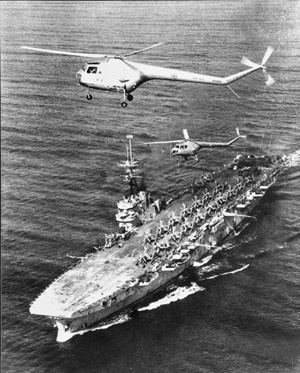 Laid down in November 1942 in Swan Hunter, HMS Vengeance was one of the first of the Colossus light fleet carriers built by Great Britain during WW2. Laid down on 16 November 1942, launched 23 February 1944 she was completed on 15 January 1945, and saw limited service before the end of the war, but did see any combat while deployed in the summer of 1945. On 11 March 1945 indeed she left the River Clyde for trials in Malta completed by 21 May, and was assigned to the 11th Aircraft Carrier Squadron of the British Pacific Fleet, sailed to Sydney via Alexandria and Port Said but also Trincomalee and Fremantle but ontly there by 26 July. She joined Task Group 111.2 and was to be deployed to Truk, but learned of the Japanese surrender while in Sydney on 15 August. She was was ordered to Hong Kong as host for the Japanese surrender here, left to Australia for a refit, and took part in the British Commonwealth Occupation Force until 20 July 1946, more than a year after arrival. She departed for England and likely decommission. She became a Scotland-based training carrier instead.
Laid down in November 1942 in Swan Hunter, HMS Vengeance was one of the first of the Colossus light fleet carriers built by Great Britain during WW2. Laid down on 16 November 1942, launched 23 February 1944 she was completed on 15 January 1945, and saw limited service before the end of the war, but did see any combat while deployed in the summer of 1945. On 11 March 1945 indeed she left the River Clyde for trials in Malta completed by 21 May, and was assigned to the 11th Aircraft Carrier Squadron of the British Pacific Fleet, sailed to Sydney via Alexandria and Port Said but also Trincomalee and Fremantle but ontly there by 26 July. She joined Task Group 111.2 and was to be deployed to Truk, but learned of the Japanese surrender while in Sydney on 15 August. She was was ordered to Hong Kong as host for the Japanese surrender here, left to Australia for a refit, and took part in the British Commonwealth Occupation Force until 20 July 1946, more than a year after arrival. She departed for England and likely decommission. She became a Scotland-based training carrier instead.
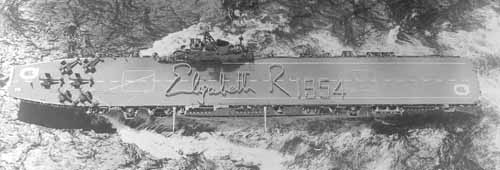
Elisabeth jubilee signature on HMAS Vengeance
After limited service with the 3rd Aircraft Carrier Squadron, Home Fleet, she cruised in South African waters until mid-November, was converted for Arctic conditions and sailed in Arctic waters for Operation Rusty. By June 1951, the RAN asked an interim carrier before the completion of HMAS Melbourne and Vengeance was loaned from late 1952 to late 1956, renouncing some upgrades to avoid delays, but still lesser modifications were completed in January 1952. She was recommissioned as HMAS Vengeance, departing Devonport for Australia at the fall of 1952 and never made her planned deployment to Korea. She was in the training role by August, prior to decommissioning by 28 October 1955. She was returned to the British Royal Navy, which considered options, but likely a sell was at the horizon.
Sale and Tranformation
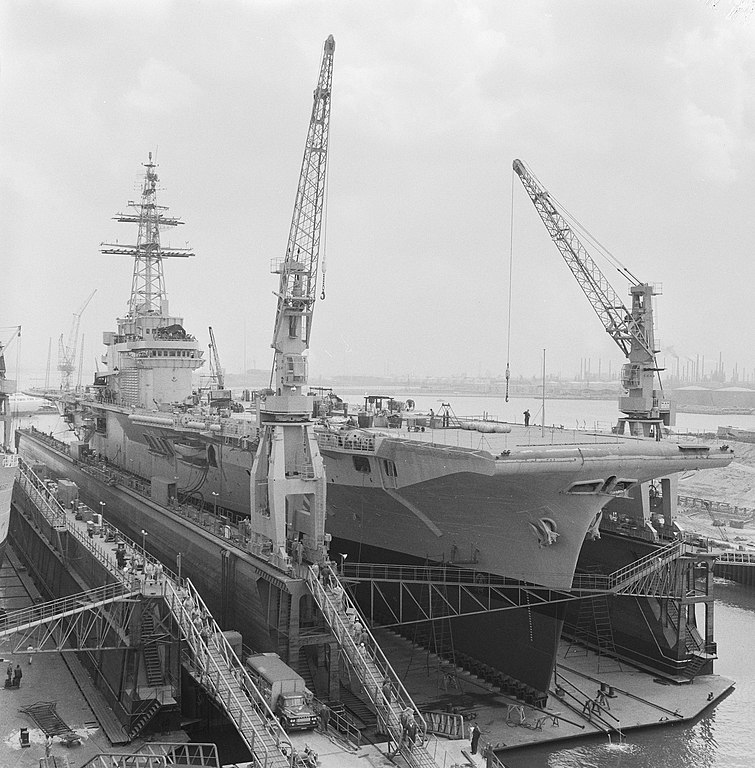
Not reactivated for RN use, contacts from the naval attaché led to a deal made with the government, on 14 December 1956, the carrier was officially sold by the Admiralty to Brazil for US$9 million. The deal however did not comprised modifications as the British Yards were completely at max capacity at the time, precisely to convert scores of carriers for other customers, inclusing Australia, Canada, the Netherlands, and the RN itself. Thus one country that could proceed to the same type of upgrade was the Netherlands, having the right drydock size at Verolme Dock in Rotterdam. Corrsponding British Yards accepted to provide the equipments and send engineers to proceed to the same standard modifications, but the Brazilian Navy wanted US and Dutch electronics instead of british ones. After all preparations were made, the now name but still uncommissioned Minas Gerais was towed to Rotterdam to proceed.
The refit lasted from mid-1957 until December 1960, so four years, somewhat quicker than for other conversions, but still enormous compared to the original construction duration of the ship itself back in 1943-44 (2 years, 2 months). She followed the same upgrade design of the class, and this massive refit was a full reconstruction which cost was US$27 million, so thrice the purchase cost in the first place, meaning Brazil could have three carriers for the total cost of these modifications, not even including the electronics and armament.
These were modifications across the board which are detailed below.
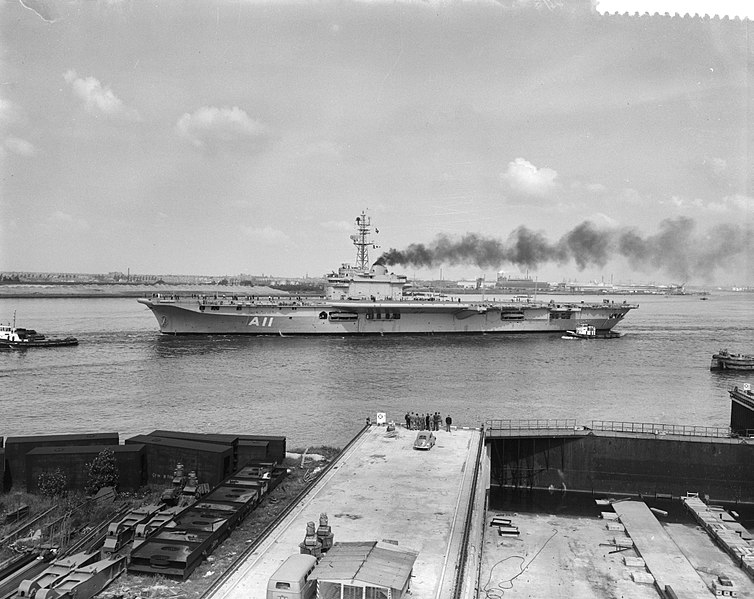
The most iconic were the 8.5-degree angled flight deck, mirror landing aid, steam catapult, and everything strenghened from arresting gear, to hangar lifts, flight deck and hangar floor. All this to allow the operation of jet aircraft, and a modern electronics suite to go with it. Brazil did not purchased British ships prior and the choice of US electronics was for the sake of training and standardization. Also, the powerplant was upgraded, all electrical systems modernized and adapted to higher power, new generators to feed hungry systems installed, the water distribution system overhauled, many changed made in accomodations, instructions across the board translated in portuguese, sub-systems installed to Brazilian standards, adoption of metric for all displays, etc.
As planned by the admiralty, her main function would be anti-submarine warfare. So her four-year conversion not only would allow her to handling heavier twin-engine US S-2 tracker and assimilated patrollers, but also helicopters. When commissioned as Minas Gerais in 1960, she was the first aircraft carrier purchased by a Latin American nation, second to enter service after ARA Independencia of rival Argentina. Theis acquisition enabled the Brazilian Navay to reconstitute its Naval Aviation branch, but also relaunched an age-old dispute with the Brazilian Air Force (FAB) for the right to board aircraft on the aircraft carrier. She immediately took part in the Legality Campaign in 1961, and the dispute with the BAF compromised its long term use. But in 1965, it was resolved for good: The Navy was prohibited from having fixed-wing aircraft.
Thus brazil was placed in a unique situation among navies of the time, as Minas Gerais could only operate its P-16 Tracker patrol planes for the short time. They were organized in the 1st Group of carrier Aviation, and completed by Navy helicopters. In service led to several renovations and from 1987 to 1996, her faulty catapult prevented her to operate anymore her S-2 fleet. Instead she became a helicopter carrier only, and repurpose as amphibious assault ship. Her S2 unit being disbanded for good in 1996 gave the Navy the opportunity to regain the right to operate planes, the 1st Squadron of Interception and Attack Aircraft, which were the first (A4) jets even land on her deck, in 2001. However she was still too slow for jets to land safely in low wind conditions. Thus at the end of this same year, she was decommissioned.
Her replacement was the ex-Foch (French Clemenceau class), as NAe São Paulo. But when retired she really was the oldest operational aircraft carrier in the world, last operational unit of World War II of the Light Fleet Carrier program ever, even older than INS Vikrant (decom. 1997). The Centaur class, completely rebuilt when completing, does not count. Despite attempts to preserve her as a museum ship (several failed auctions), she was sold for scrap in 2004, made in Alang, India.
Design Modifications
General design modifications:
Modifications comprised the following:
-Installation of an 8.5-degree angled flight deck. The angle required that an accessway was built around the starboard side of the island superstructure. Its weight acting as a counterbalance for the flight deck’s portside overhang.
-Construction of a lattice mast over the Island
-New fire control system and radar suite
-Modified Island, with notably the exhausts truncated unto a new funnel.
-New and more powerful steam catapult
-Stronger arresting gear cables.
-Reinforced hangar elevator
-Mirror landing aid (latest British model) on an extended sponson 3/4 port forward of the landing deck.
All these modifications permitted the operation 20,000 pounds (9,100 kg) jets.
Powerplant
2500 KW alternating current powerplant was also added, fed by four turbo-generators and a diesel. The ship’s boiler capacity was increased. The while internal electricity network was converted to AC thanks to the four turbo generators and single diesel generator installed, a necessity to power the electronics.
Performances wise, apart boiler changes, the same steam turbines were retained, and the ship maintained 25 knots (46 km/h; 29 mph) at 120 revolutions despite its higher displacement, and had a range ported to 12,000 nautical miles (22,000 km; 14,000 mi) at 14 knots and she was able to make fast runs over 6,200 nautical miles (11,500 km; 7,100 mi) at 23 knots (43 km/h; 26 mph) so quasi-top speed.
Armament
Armament was fixed after refit and did not changed until the 1990s upgrades (see below). Originally it consisted in ten Bofors 40 mm anti-aircraft guns (two quad mounts Mk 2, all shielded, and one twin mount Mark 1, also shielded). It seems the twin was placed on a port side sponsons aft while the two quad was on top of the island starboard for the best arc of fire. There were also two 47 mm saluting guns.
Electronics
The Minas Gerais was provided wth a brand new suite of modern fire control systems and radars, all US electronics. These comprised the following:
-SPG-34 radar for the AA quad mounts
-Two Mk 63 and a Mk 51 FCS
-The SPS 12 air seach radar
-The SOS 8B, SPS-4, and Raytheon 1402 for aerial surveillance, 2D.
During her major refit of 1976-80 she received the SPS-40 B radar and later the ZW-06, as well as the Italian Scanter Mil and Ferranti combat data system, compatible with CAAIS.
Aircraft Facilities
Despite her small dimensions, her enlarged and reshaped flying deck was reinforced to operate jets up to 20,000 Ibs. and large helicopters. She received a new steam catapult and latest British-style mirror-sight deck landing system. The hangar was modified as well, to 445 ft by 41 by 17 (135 x 15.8 x 5.3 m).
Air Group

Navy Skyhawk 4KU in 1999 (author’s illustration)
The carrier experienced a major problem early on. In 1965, President Humberto de Alencar Castelo Branco outlawed operation of fixed-wing aircraft by the Brazilian Navy. The long dispute between the Air Force and Navy (this inter-service rivalry in the interwar even went to actual combat) was won by the former. This remained the responsibility of the Força Aérea Brasileira (FAB) and Minas Gerais obtained two air groups, one from Navy helicopters and one from the Air Force which operated S-2 Tracker aircraft n behalf of the Navy, quite a unique situation among Navies with carriers at the time. She operated as an anti-submarine warfare carrier, and underwent another major refit from 1976 to 1981, and after a second wave from July 1991 to October 1993, she lost the capacity top operate her S-2 due to her inefficient catapult, which was not upgraded or overhaul due to budgetary issues.
In 1999 however, the Navy obtained the right to possess aircraft (the law was amended) and obtained a batch of 20 A-4KU Skyhawks, 3 TA-4KU trainer aircraft from the Kuwait Air Force. The Skyhawk by force became the first of the Forca Aeronaval da Marinha (Brazilian Navy Aviation). Still she was authorize to operate 6-2 seven ASW Grumman S2G tracker still flew by the air force, but rarely aboard, and eight Navy SH3D Sea king, 4-6 Agusta-Bell SH-3A in alternative as well as 2 Aerospace UH-13 Squirrel II and/or three UH-14 Super Puma from the army as part of her new assault role. Thus before decommission in 2001, she operated on paper air assets from all three services: Land force, Air force and Navy. More is developed on the career’s section.
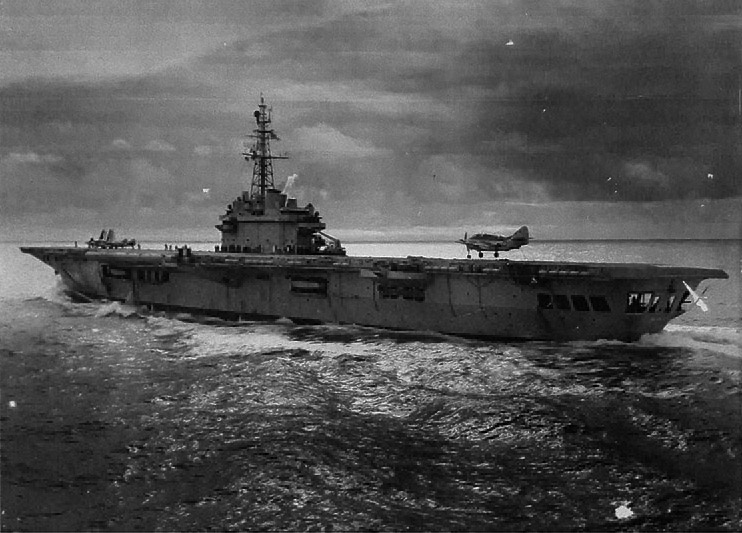
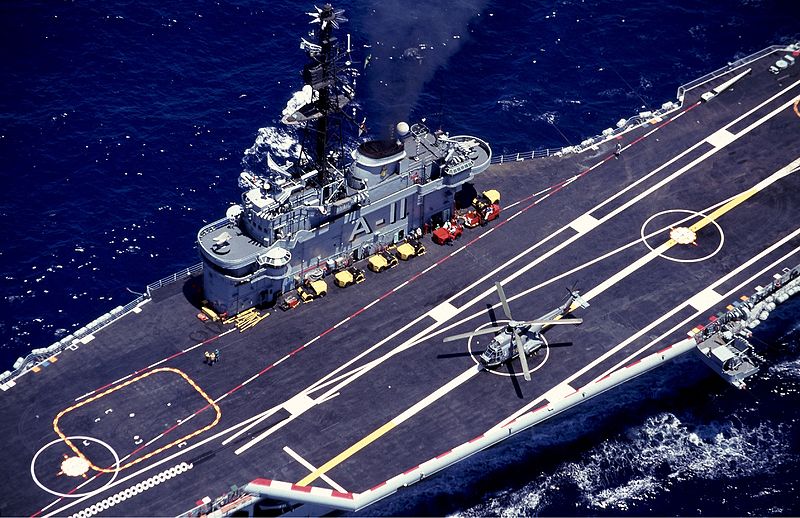
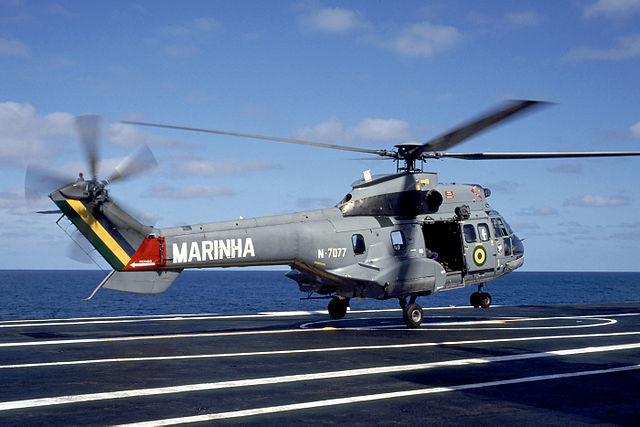
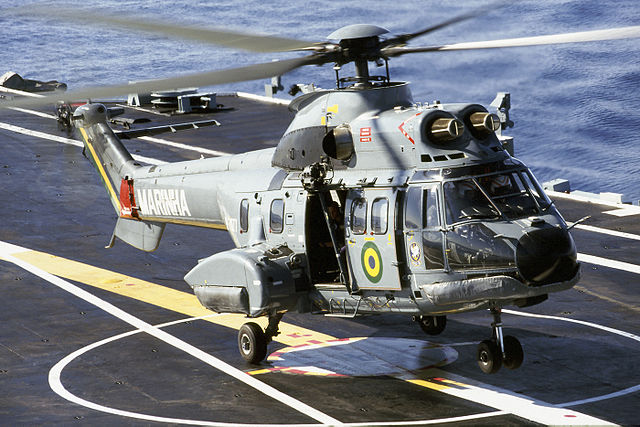

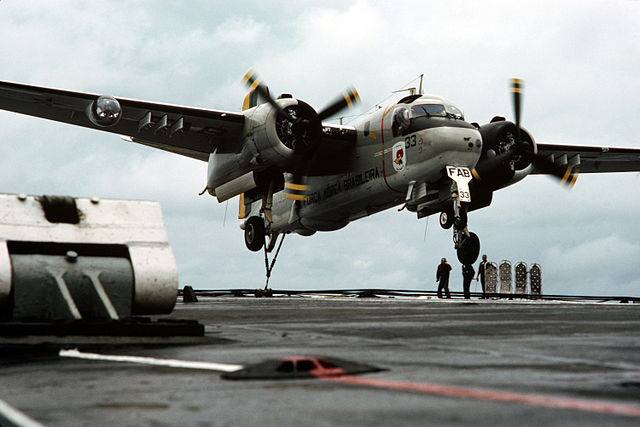
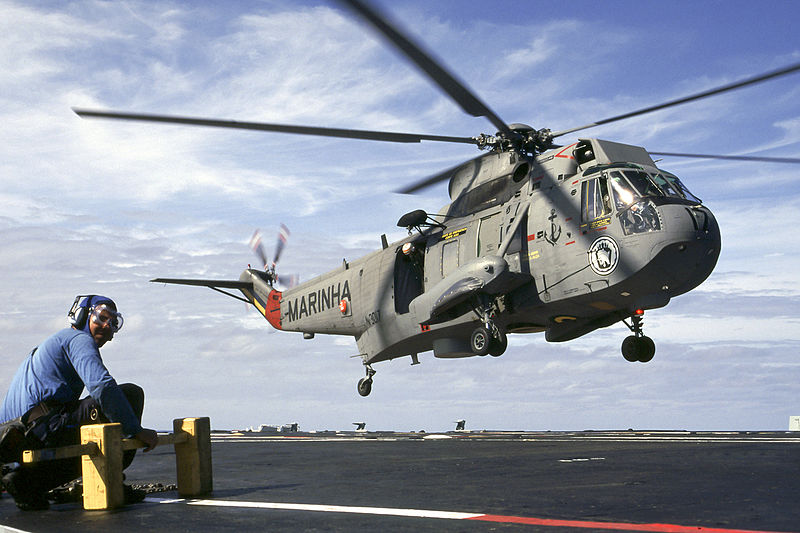
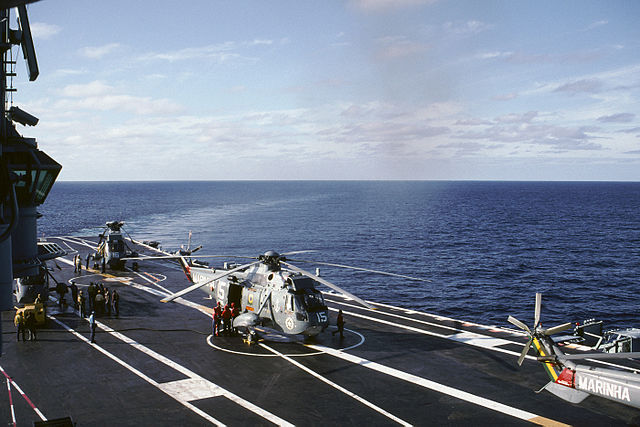
Further Upgrades
1976-81
Her radar suite was updated: MP1402 radar. In 1984 she also received in exchange of the SPS-12 and SPS-8B radars the new USN SPS-40B radar. Datalinks were installed, her life expectancy was increased to the 1990s. From 1986 however rival ARA Veinticinco de Mayo was confined to port due to engines and budgetary issues so Minas Gerais became the last operating carrier in South American waters.
1991-93

Mistral mount on the Foch before transfer to the Brazilian Navy, and on Minas Gerais.
From July 1991 to October 1993, she had a last modernisation refit, with complete refurbishment of her propulsion system, command and control system completely modernized, as well as radars, all old Bofors guns replaced with Mistral surface-to-air missiles (it was time!). To be precise, in 1991 she saw the removal of her SPS-4 and MP1402 radars for four AWS-4 FCS an two Terma Scanter radars, the new Terma landing system and the SLR-2 ECM suite as well as two Shield decoy RL. 1995, this was the removal of all Bofors. The launchers were twin, and called SIMBAD SAM (roughly 24 Mistral missiles in stock). The latter was short-range, up to 6 km, with Infrared homing. In 1999, her air group was also modernized, this time with the projected jets which justified her 1950s upgrade.
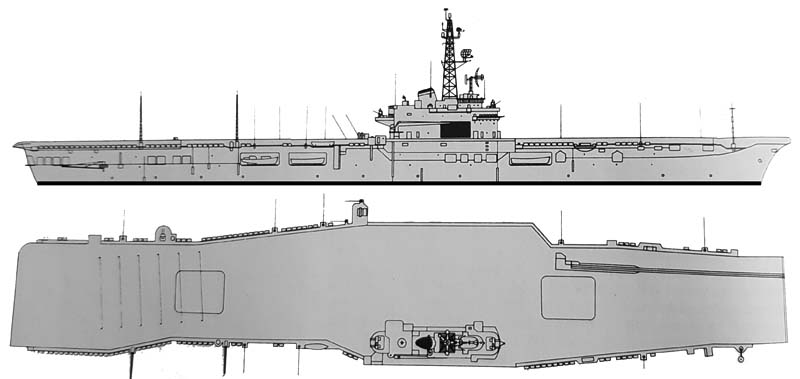
blueprint of the Minas Gerais in 1975 (src navypedia)
⚙ specifications |
|
| Displacement | 15,890 tons standard, 17,500 normal, 19,890 tons full |
| Dimensions | 695 ft (212 m) oa x 80 ft (24 m) x 24.5 ft (7.5 m) |
| Propulsion | 2 steam turbines, 4 boilers, 4 Turbogenerators, 1 diesel generator |
| Speed | 25 knots (46 km/h; 29 mph) 120 rpm |
| Range | 12,000 nm (22,000 km; 14,000 mi)/14 knots, 6,200 nm (11,500 km; 7,100 mi)/23 knots |
| Armament | 2×4, 1×2 Bofors 40 mm, 2× 47 mm saluting guns |
| Sensors | Air search: Lockheed AN/SPS-40B; E/F band Surface search: Plessey AWS 4; E/F band Navigation: Signaal ZW06; I band Fire control: 2 × AN/SPG-34; I/J band CCA: Scanter Mil-Par; I band |
| Air Group | 21 (see notes) |
| Crew | 1300 (300 air group) |
Career of Minas Gerais

Minas Gerais refuelling her escort Marcilio Dias in the 1980s
A difficult acceptation
 The purchase of the carrier in the first place was controversial among the population. The press denounced a ship that was no more than “scrap metal” regardless of her laying down and early WW2 emergency (“expendable”) design, short active life, negating the benefit brought by a full restoration to be done in the Netherlands. By 1959, federal deputy Paulo Mincarone published “Escândalo do Minas Gerais”, a book clearly accusing the Navy financial embezzelment and suspicious overspending (related to the 27 million dollars modernization).
The purchase of the carrier in the first place was controversial among the population. The press denounced a ship that was no more than “scrap metal” regardless of her laying down and early WW2 emergency (“expendable”) design, short active life, negating the benefit brought by a full restoration to be done in the Netherlands. By 1959, federal deputy Paulo Mincarone published “Escândalo do Minas Gerais”, a book clearly accusing the Navy financial embezzelment and suspicious overspending (related to the 27 million dollars modernization).
Journalist David Nasser (favorable to the president) criticized this purchase to attack admirals opposed to the president. He considered these expenditures a “waste” notably when compared to the construction of Brasilia, the brand new capital, also widly critisised at the time. From the Navy point of view thse were redired as the “Carrier Enemies Club” and voicing their anger in pilots’s publications, as well as airline workers and well covered by the press for the Land Forces, which took the sides of the Air Force.
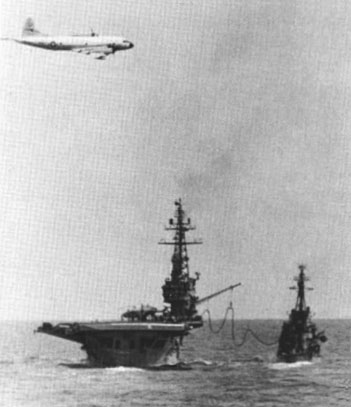 After more than three years of costly and complex post-service overhaul combined to full reconstruction, the ship was at last officially commissioned into the Navy as NAeL Minas Gerais on December 6, 1960. At that stage she was one of the older of these 1942 fleet carriers being converted. The name and “São Paulo” of course was chosen due to full support since 1955 by the powerful state in political history, chosen for a sister ship battleship (Minas Garaes class) and thus retaken for the new capital ship of the day, an aircraft carrier.
After more than three years of costly and complex post-service overhaul combined to full reconstruction, the ship was at last officially commissioned into the Navy as NAeL Minas Gerais on December 6, 1960. At that stage she was one of the older of these 1942 fleet carriers being converted. The name and “São Paulo” of course was chosen due to full support since 1955 by the powerful state in political history, chosen for a sister ship battleship (Minas Garaes class) and thus retaken for the new capital ship of the day, an aircraft carrier.
There was still some debate over her name, always a political sensitive matter well relayed by the press, but Minas Gerais prevailed mostly because of Kubitschek’s home state. Hwever she soon was nicknamed by the sailors “Mingão”. She left Rotterdam for Rio de Janeiro on 13 January 1961, but she delayed the trip so to arrive just shortly after the end of Juscelino Kubitschek’s term on January 31.
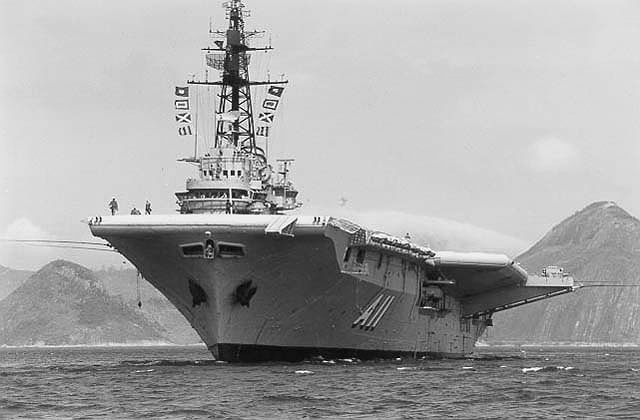
The reconstruction duration was also a contentious point, since the Navy missed the opportunity to be the first south american nation with an aircraft carrier. Old rival Argentina won this match, as ARA Independencia entered service by July 1959. Relations between Brazil and Argentina were sensitive but regional rivalry was not preponderant as she was to operate against Soviet Submarines only. Argentinian Carriers however (Independencia and later 21 de Mayo) were more versatile. Thus carrier acquisition was not seen by the United States as a Brazilian threat for regional hegemony for the same reason, and at the contrary encouraged it to take part alongside NATO south American efforts. The only dissension however was that this British origin reduced Brazilian Navy’s reliance on American procurement, but still compensated by the latter provding both the electronics and ASW air group.
A brand new naval air force
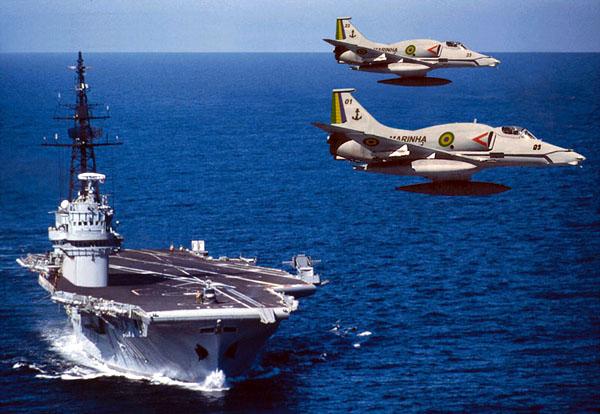
Minas Gerais and her air group in 1999
Shortly after purchasing the aircraft carrier, the Brazilian Air Force created the “1st Carrier Aviation Group” for naval air operations. At first it was planned with a squadron of anti-submarine patrol planes and another of fighter planes usable against Argentina. However when the Navy limited the new carrier to an anti-submarine role, the fighters were replaced by a squadron of anti-submarine helicopters. In total, the 1st CAG was provided with thirteen Grumman twin-engine S2F-1 Tracker planes (P16 Brazilian variant), and six Sikorsky HSS-1N helicopters (Brazilian SH-34J). They were funded under the Fernando de Noronha Agreement signed between Brazil and the US in 1957, in compensation for the installation of a satellite tracking station on the namesake island. The US Navy trained squadron personnel at first and provided initial maintenance, to start operations from January 1961. It was soon nicknamed the “Cardinal Squadron”.
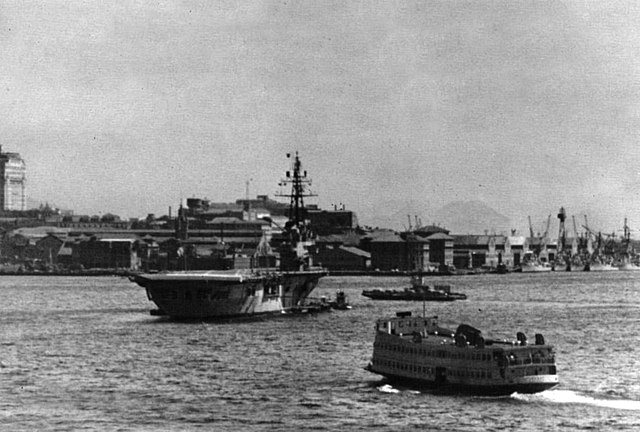
The Navy however maintained the whole unit on the ground. Minas Gerais arrived in Brazil with three old Grumman TBF Avenger planes used to train pesonal to handle heavy planes for deck-lift maneuvers. But they also had three Westland Whirlwind S-55 Srs.1 helicopters, six Bell HTL-5 (model 47D), all crated and disassembled, unarmed. In 1963, six North American T-28 Trojan planes were received to start operation on the the aircraft carrier in its early years; Since they were far from the jest initially planned, the carrier was soon renamed “The Handsome Antonio”, a reference to an impotent protagonist of an Italian film of that time…
Still, relations between the Naval Aviation and Air Force were extremely tense, and the “onboard aviation problem” in the press led to boiling point in 1964. In 1965, President Castelo Branco allowed the Navy to operate Aie Force helicopters, as the S2 Tracker and Trojan, also belonging to the air force. They were to operate at forst from gound bases. Eventually, Minas Gerais nominally “embarked” two air groups: AF helicopters and planes which could be deployed on the carrier; The helicopter park soon became permanent. However no spots were painted on the deck before the 1990s reconversion as assault carrier.
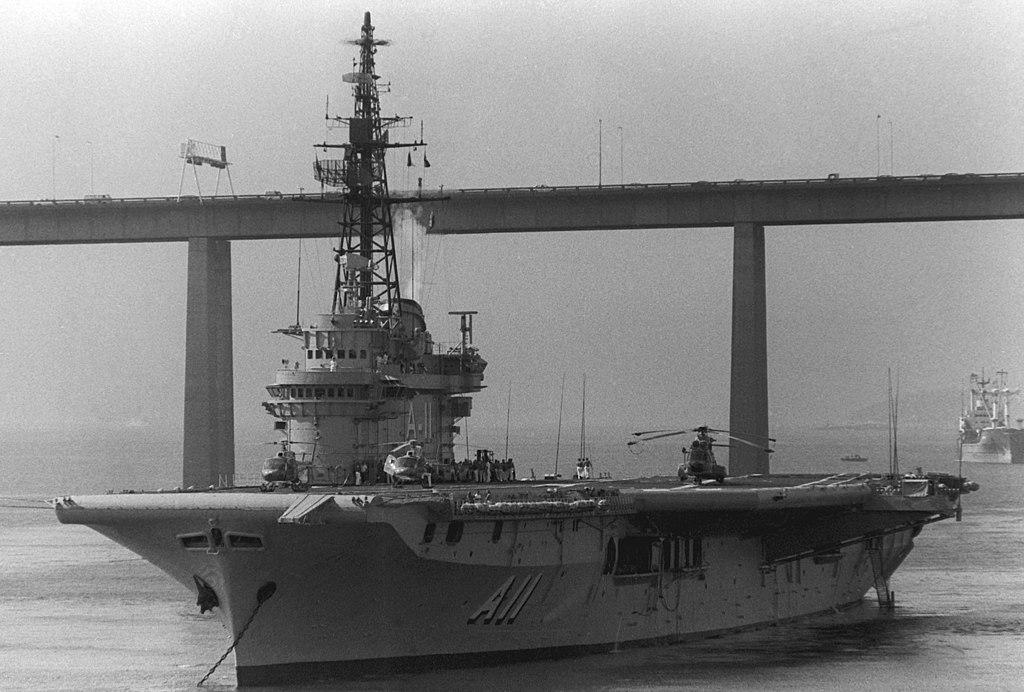
At last, the first landing of a P-16 on her deck was performed on June 22, 1965 for initial qualifications. From then on, a permanent park of Trackers became routine in operations. From 1975, the group received the modernized P-16E (S-2E), and retroactively the older models were renamed P-16A. Eight of these were upgraded to the UP-16 standard (No ASW equipment, converted with seating for 6 as transports). The 1st Squadron started to operate the new P-16E, the 2nd Squadron operated the P-16A and UP-16 for training/transport. From 1976 to 1988, six additional S-2Es were purchased for spare parts, grounded as “logistic P-16s”.
According to pilot’s reports, taking off and landing the P-16, a relatively large model fir for US supercarriers or even the larger Essex class, was a challenge. With its unstable, narrow and short (145 m) flight deck in rough seas, landing the P-16, one of the largest carrier aircraft ever designed, was a daunting task. Planes were guided by air force personal, the Landing Signaling Officer, monitoring the trajectory of both the plane and ship as well as respective angles in real time while an helicopter remained aloft in alert to rescue the crew in case of an overshoot and crash.
The six Sikorsky of the Air Force were transferred to Naval Aviation at last, incorporated into the 1st Squadron of Anti-submarine Helicopters untile replaced by the Sikorsky SH-3 Sea King in 1975. The 1st Squadron of General Purpose Helicopters later received the Westland UH-2 Wasp, UH-5 Whirlwind Series 2 and Fairchild-Hiller UH-4 (FH-1100). From 1979 this was the Aerospatiale AS350 Ecureuil. In the 1980s, the carrier routinely operated both P-16 Tracker and Sea King, a powerful combination for ASW warfare, combining long range and the ability to station over a target. In the mid-1990s, the air group was limited to six P-16E Trackers, 4-6 ASH-3D Sea Kings, 2 AS-355 Ecureuils (used for SAR), and three A-332 Super Pumas for amphibious Operations.
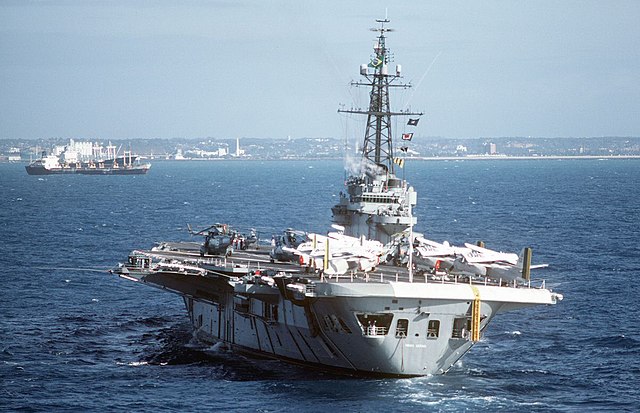
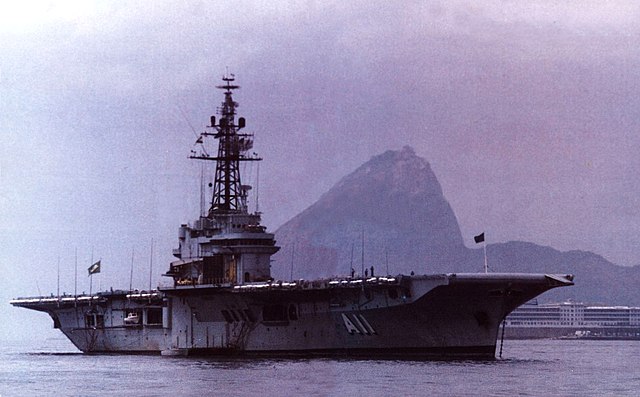

In 1988, Canadian IMP was contracted to convert all twelve P-16Es to the new P-16H standard (S-2T) but between its inexperience and lack of funds the project was canceled in 1996. Operations on Minas Gerais ceased that same year with the Trackers retired. In 1999 however the acquisition of twenty A-4KU Skyhawks (ex very upgraded Kuwaiti models) plus three TA-4KU trainers were trabsferred for 7 million dollars. They operated from the carrier by the late 2000, safely launched and landed but the carrier own limited speed was a liability in other but only calm conditions. In practice, the aircraft carrier would have to remain close to the coast to operate them, severly limiting its capabilities as a 12,000 nm carrier…
Marking points of her service.
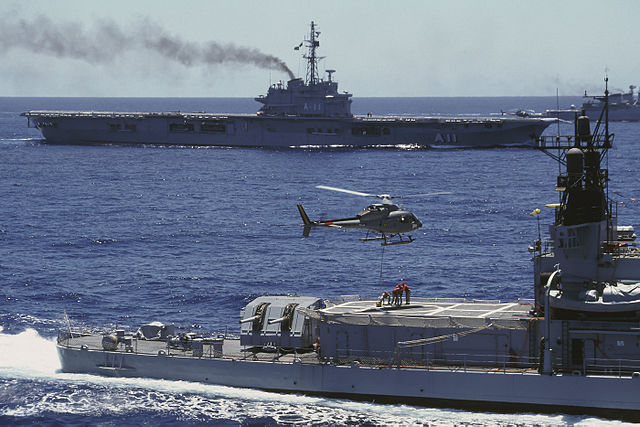
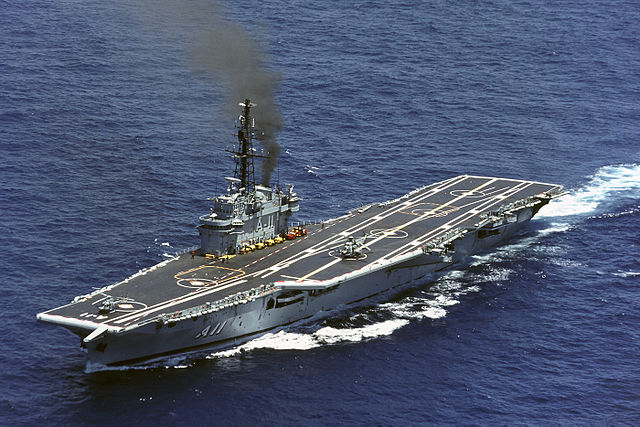
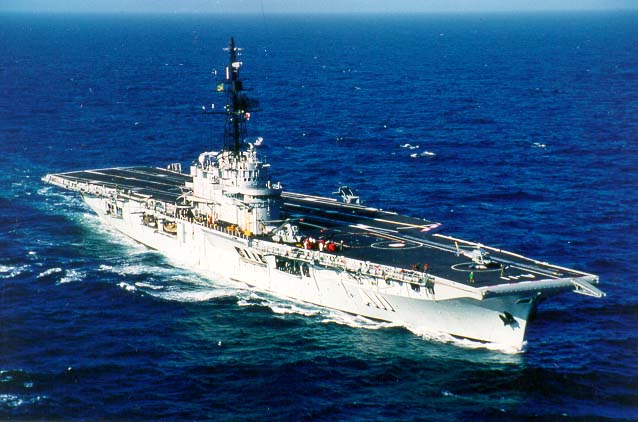
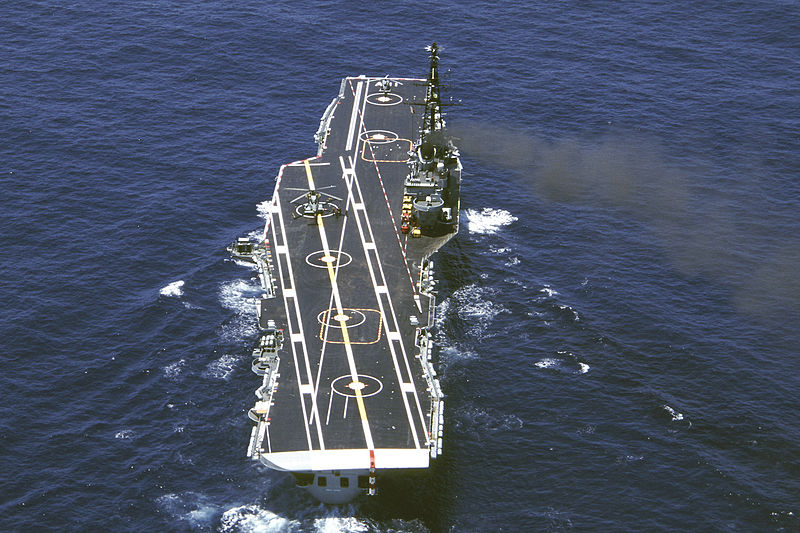
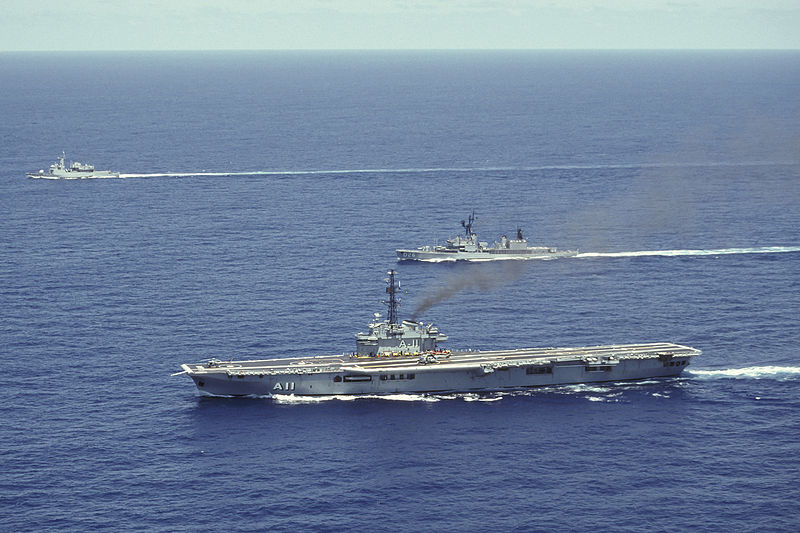
In 1961, she was used in the “Campaign for Legality” as senior military authorities planned “Operation Ring”. The brand new carrier would have been deployed to the south of the country to launch P-16s and fly over Porto Alegre, threatening of bombing the Military Brigade of Rio Grande do Sul and other forces loyal to the Gaucho governor Leonel Brizola. However she ship left port without these planes and the operation wa scancelled. Minas Gerais was not present during the “Lobster War”, a short fishery dispute which grew to a confrontation with the French Navy. This absence caused criticism of the Navy by Air Force supporters on the issue of on-board aviation. However her presence was optional as the area disputed was on a continental shelf in reach of the Brazilian ari force anyway.
From 1965 onwards, Minas Gerais became the world’s only active aircraft carrier sporting a mix of air force and navy aviation aboard. While at sea, the Air Force was subordonated to the ship’s commander. In 1982, an official US DoD study called this division of responsibilities anomalous and declared it would likely create command-and-control problems. Even so, the mixed crew went along well in the end. The only persistent problem was relationship between the air force staff sergeants and junior and 1st class sailors. This was translated in accommodation and sectors issues. Despite of this, Minas Gerais was now accepted and seen as a national flagship, having a strong symbolic value and the numerous destroyers of the fleet escorted her in many deplyments, adding their own weight in ASW warfare. From 1965 onwards, Minas Gerais often took part in UNITAS exercises. In Unitas XXI (1980) one of her P-16 detected with passive buoys a Soviet submarine, an “uninvited visitor” which was intimitated to leave. In three decades of operations, her air group performed 16,746 aircraft landings, of which 3.3% were aborted, which was remarkable given the diffulty of landing such a large plane (the P16/S2 Tracker). There was only one fatality in all these landings also whereas ten were lost throughout 1st GAE history.
The modernization of 1976 to 1979 meant pilots were deprived of onboard training, and had to catchup later. In 1988 the carrier started to experience scores of engine problems. Rival Argentina also had issue with its own ARA Veinticinco de Mayo which was eventually stuck to port and eventually discarded. Minas Gerais now alone in south american waters was confince to port as well, and her issues accumulated. In December 1987 she could not participate in Operation Dragon XXIII due to catapult issues. They were never resolved and ultimately the naval staff changed her role to training vessel and amphibious assault ship with an air group composed of Brazilian Marines helicopter, Cougar (Aerospatiale Puma) and Aerospatiale Ecureil (Squirrel).
In November 1993 she made a joint exercise with the Argentine Navy in which Argentine pilots at last had a carrier to perform with their Super Étendard some 177 touch-and-go landings, maintaining their carrier landing qualifications. In 1995-1996, Minas Gerais swapped catapults with the noew decommissioned Veinticinco de Mayo, after purchased and installation, which restored her capabilities. By 1997 she received indeed an A-4Q Skyhawk on loan from the Argentinian aviation for deck tests. In between the Navy and Air Force negociated to lift the ban on naval aircraft. As the test cmpaign was successful, in 1999 acquisition of twenty A-4KU Skyhawks, three TA-4KU trainer from Kuwait achieved not only this restoration of her air power, but enhanced it. She kept her amphibious assault role still, but now with a fleet of multirole jet aircraft at last. They formed the First Intercept and Attack Squadron, entering service in the early 2000, starting operations by late October. Adoption of the Skyhawk was also the result of good relations with the Argentinian Navy which granted access to a large documentation accumulated over the years with their own carrier operating the Skyhawk.
Decommission, replacement and Fate.
However this last upgrade was not to allow Minas Gerais more service life. A decommission and replacement was already suggested in the early 1980s as part of the 15-year naval expansion program. At this occasion the Brazilian Navy studied two different options:
1-A 40,000 tonnes ship equipped with 40 aircraft, including naval fighters.
This plan required to expand the Brazilian Navy air arm with second-hand A-4 Skyhawks from Kuwait or Israel.
Thus necessitaed to rule out the 1965 decision and this was at the time still opposed by the BAF. Within the Navy this was it not widely accepted either as negating the existing carrier her anti-submarine warfare role. The new air group would project power and projection to the squadron, and this was largely the result of reported from the 1982 Falklands War. To make the new aircraft purchase worthwhile, Minas Gerais would have to operate these until a replacement aircraft carrier entered service, which means the installation of a modified steam catapult and new arrestor cables. As she just went out of a costly modernization, the latter was rejected as too expensive and in October 1984 the plan to acquired Skyhawks was canceled. But it was successfully revisited in the late 1990s as the situation changed.
2-A 25,000-ton helicopter carrier built to commercial standards, various reports suggesting something similar to the Royal Navy’s HMS Ocean. But again, nothing came of it.
The Minas Gerais replacement at last seriously considered in 1999 as despite numerous life-extending modernizations and refits, her age was showing. All signs shouted out loud for a replacement before 2010. In addition to the two 1984 proposals, consideration was given to acquire a second-hand aircraft carrier. There was not much choice. The USN supercarriers of the Forrestal class were cklearly way over budget for the Brazilian Navy and in Europe, CATOBAR were a rarity. In fact there was only one proposition. As the French Navy were just completing the nuclear powered Charles de Gaulle decommission of the previous Clemenceau class presented an opportunity. The most obvious one was the first decommissioned, FS Foch. This seems ideal indeed as by dimensions and design philosophy she was still close to the Minas Gerais, albeit larger.
One main main issue was significant investment in fixed-wing aviation of the late 1990s as Foch would be more expensive to acquire and operate than a STOVL or helicopter carrier. Anyway in the end, Foch was acquired, renamed NAe São Paulo, the second largest state of Brazil. She was scheduled to enter service in April 2001. Meanwhile, Minas Gerais was demoted to a helicopter support vessel in 2001, prior to her own decommission, which, so shortly after her last overhaul, was controversial.
Minas Gerais was eventually decommissioned on 16 October 2001, and at the time she really was the last WWII-era light aircraft carrier leaving service with INS Viraat on the other side of the globe. She was more modern as the former Falklands war veteran HMS Hermes, and was decommissioned in turn by 2017. Were presetn at the decommissioning ceremony 87 years old Admiral Hélio Leôncio Martins, her first commander and all those who had served at different times. She was placed for sale in 2002. The British naval association flew to Brazil with a proposal to returned her to the UK for preservation as a museum ship, but as often, funding was lacking.
Still, the old carrier failed to secure as sale, and by 2003, the Brazilian admiraty apparently made a move unlike any other navy at the time (or since). Indeed the venerable aircraft carrier was auctioned on eBay ! But it was an hoax, by a user claiming to be a ship broker representing the owner. Still, EBay Bidding went to £4 million before the auction was removed from the website upon breaching rules on selling military hardware. A more serious auction in Rio de Janeiro held in February 2004 but ended without buyer. Later at last a deal was found and by July 2004, she has been sold to Alang in India for dismantling, probably below metal weight market price.
Read More/Src
Books
Anthony, Ian (1990). The Naval Arms Trade. Strategic issue papers. Oxford University Press.
Australian Naval Aviation Museum (ANAM) (1998). Flying Stations: a story of Australian naval aviation. Allen & Unwin.
Blackman, Raymond, ed. (1968). Jane’s Fighting Ships, 1968-69 (71st ed.).
Bishop, Chris; Chant, Christopher (2004). Aircraft carriers: the world’s greatest naval vessels and their aircraft. Zenith.
Gordon, Lincoln (2001). Brazil’s Second Chance: En Route Toward the First World. Brookings Institution Press.
Ireland, Bernard (2008) [2005]. The Illustrated Guide to Aircraft Carriers of the World. London: Anness Publishing.
Sharpe, Richard, ed. (March 1996). Jane’s Fighting Ships, 1996-97 (99th ed.).
Conway’s all the world’s fighting ships 1947-1995
Corless, Josh (1 June 1999). “The Brazilian Navy blazes a trail in the South Atlantic”. Jane’s Navy International.
English, Adrian J. (2002). “Focus on Latin American Navies”. Naval Forces. Bonn Mönch.
English, Adrian J. (1 May 1996). “Latin American Navies still treading water”. Jane’s
“Brazil – Skyhawks begin flights from carrier”. Jane’s
“Carrier Aviation – Skyhawks set to land on Brazilian carrier”. Jane’s
Scott, Richard; Starr, Barbara (1 March 1999). “Carrier aviation at the crossroads”. Jane’s
Till, Geoffrey (April 2005). “Holding the Bridge in Troubled Times: The Cold War and the Navies of Europe”. Journal of Strategic Studies. Routledge.
Links
O poder pelo mar: a indústria de construção naval militar no Brasil a partir da política desenvolvimentista de Juscelino Kubitschek (1956-1961)
resdal.org/papers/caso-brasil
portaldeperiodicos.marinha.mil.br
hms-vengeance.co.uk
wiki cc photos
naval.com.br/biblio/NAeL_Minas
naval.com.br/historia/a_compra/vengeance
fleetairarmarchive.net/vengeance
hms-vengeance.co.uk/farewell
telegraph.co.uk: For-internet-sale-aircraft-carrier,-only-three-owners
telegraph.co.uk: Race-to-save-historic-ship-from-scrap-heap
fleetairarmarchive.net/vengeance
pt.wikipedia.org/wiki/NAeL_Minas_Gerais
Videos
Model Kits

None found so far, but an interesting conversion found based on the Arromanches made by L’Arsenal. In fact any Colossus/Majestic kit could be transformed with some work.
Part-scratchbuilt kit based on l’arsenal by Nick Shipp

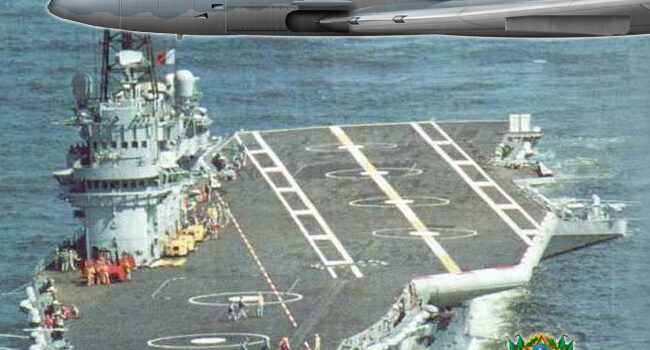
 Latest Facebook Entry -
Latest Facebook Entry -  X(Tweeter) Naval Encyclopedia's deck archive
X(Tweeter) Naval Encyclopedia's deck archive Instagram (@navalencyc)
Instagram (@navalencyc)





 French Navy
French Navy Royal Navy
Royal Navy Russian Navy
Russian Navy Armada Espanola
Armada Espanola Austrian Navy
Austrian Navy K.u.K. Kriegsmarine
K.u.K. Kriegsmarine Dansk Marine
Dansk Marine Nautiko Hellenon
Nautiko Hellenon Koninklije Marine 1870
Koninklije Marine 1870 Marinha do Brasil
Marinha do Brasil Osmanlı Donanması
Osmanlı Donanması Marina Do Peru
Marina Do Peru Marinha do Portugal
Marinha do Portugal Regia Marina 1870
Regia Marina 1870 Nihhon Kaigun 1870
Nihhon Kaigun 1870 Preußische Marine 1870
Preußische Marine 1870 Russkiy Flot 1870
Russkiy Flot 1870 Svenska marinen
Svenska marinen Søværnet
Søværnet Union Navy
Union Navy Confederate Navy
Confederate Navy Armada de Argentina
Armada de Argentina Imperial Chinese Navy
Imperial Chinese Navy Marinha do Portugal
Marinha do Portugal Mexico
Mexico Kaiserliche Marine
Kaiserliche Marine 1898 US Navy
1898 US Navy Sovietskiy Flot
Sovietskiy Flot Royal Canadian Navy
Royal Canadian Navy Royal Australian Navy
Royal Australian Navy RNZN Fleet
RNZN Fleet Chinese Navy 1937
Chinese Navy 1937 Kriegsmarine
Kriegsmarine Chilean Navy
Chilean Navy Danish Navy
Danish Navy Finnish Navy
Finnish Navy Hellenic Navy
Hellenic Navy Polish Navy
Polish Navy Romanian Navy
Romanian Navy Turkish Navy
Turkish Navy Royal Yugoslav Navy
Royal Yugoslav Navy Royal Thai Navy
Royal Thai Navy Minor Navies
Minor Navies Albania
Albania Austria
Austria Belgium
Belgium Columbia
Columbia Costa Rica
Costa Rica Cuba
Cuba Czechoslovakia
Czechoslovakia Dominican Republic
Dominican Republic Haiti
Haiti Hungary
Hungary Honduras
Honduras Estonia
Estonia Iceland
Iceland Eire
Eire Equador
Equador Iran
Iran Iraq
Iraq Latvia
Latvia Liberia
Liberia Lithuania
Lithuania Mandchukuo
Mandchukuo Morocco
Morocco Nicaragua
Nicaragua Persia
Persia San Salvador
San Salvador Sarawak
Sarawak Uruguay
Uruguay Venezuela
Venezuela Zanzibar
Zanzibar Warsaw Pact Navies
Warsaw Pact Navies Bulgaria
Bulgaria Hungary
Hungary

 Bundesmarine
Bundesmarine Dutch Navy
Dutch Navy Hellenic Navy
Hellenic Navy Marina Militare
Marina Militare Yugoslav Navy
Yugoslav Navy Chinese Navy
Chinese Navy Indian Navy
Indian Navy Indonesian Navy
Indonesian Navy JMSDF
JMSDF North Korean Navy
North Korean Navy Pakistani Navy
Pakistani Navy Philippines Navy
Philippines Navy ROKN
ROKN Rep. of Singapore Navy
Rep. of Singapore Navy Taiwanese Navy
Taiwanese Navy IDF Navy
IDF Navy Saudi Navy
Saudi Navy Royal New Zealand Navy
Royal New Zealand Navy Egyptian Navy
Egyptian Navy South African Navy
South African Navy






























 Ukrainian Navy
Ukrainian Navy dbodesign
dbodesign